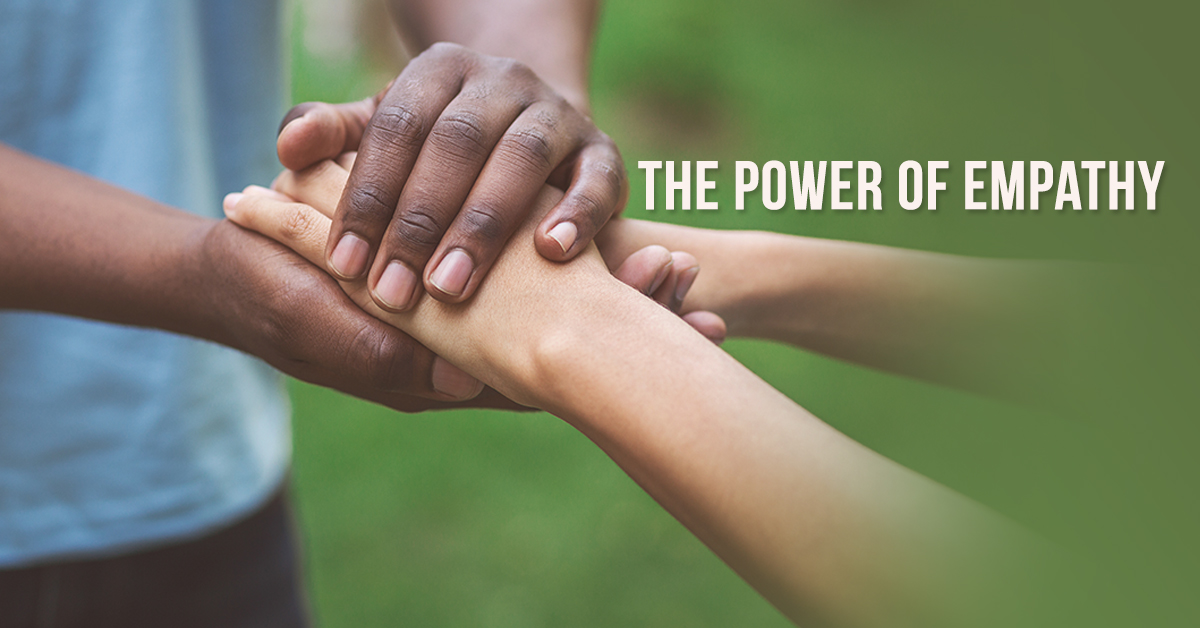To talk about the power of empathy, one must first understand the difference between sympathy and empathy. According to Psychology Today, ‘Sympathy’ is a feeling of care and concern for someone, often someone close, accompanied by a wish to see that person better off or happier. However, sympathy, unlike empathy, does not involve a shared perspective or shared emotions. The power of empathy is the ability to understand another person’s thoughts and feelings, stepping into their shoes, and seeing things from their perspective.

The difference between sympathy and empathy is beautifully portrayed in this video clip below, where Dr. Brene Brown narrates with her TED talk on empathy. She elaborates on the metaphor of a dark hole. Empathy is when we climb down that hole with someone and pull something out within ourselves so that we can be on that same “ground level” as the other person. Whereas, sympathy is looking down at that person in the hole and saying “yeah, that’s bad huh”. The video is ended with the simple but significant statement: “The truth is, so rarely can a response make something better, what makes something better is connection.”
Renowned psychologists Daniel Goleman and Paul Ekman have identified three types of empathy: Cognitive, Emotional, and Compassionate.
- Cognitive: Knowing how another person feels and what they are thinking.
- Imagine yourself talking to your friend who just lost their job. You likely know that this person is feeling sad and anxious because they rely on this job to pay the bills. This type of empathy keeps you at a distance from your friend, and in order to truly connect, this is where emotional empathy comes into play.
- Emotional: When you can feel another person's emotions as if they were contagious.
- This type of empathy can be felt physically and mentally. Let’s look back at the scenario where your friend lost their job. With this type of empathy, for example, your friend cries, you cry too. You look inwards to identify yourself in this situation or can relate on a deeper level to your friend with a similar situation you, yourself went through.
- Compassionate: This third type of empathy is a mixture of the first two. Not only do we understand what the other person is feeling, and feel all the feelings with them, we also feel compelled to help them in some way.
- This combination of both Cognitive and Emotional empathy is what leads us to play a part in the problem-solving process. Because your friendship means so much to you, and you empathize with them on a deeper level, of course, you are going to try and help them!
However, empathy can look different for everybody. It can oftentimes not be as natural to some as it is to others - and that’s okay. There is a difference between “ordinary” sympathy and being an empath. Empaths tend to rank highly on the empathic spectrum and physically feel what happens to others in their own bodies. The experience of being an empath can be an exhaustive one, and also a really beautiful one. The level of compassion an empath can feel is powerful.
Are you an empath? Here are some self-assessment questions to find out:
|
The more “yes’s” you have said to yourself answering these questions, the higher you rank on the empathic spectrum.
Growing up, societal expectations have taught us that showing emotion can be a sign of weakness. Our world has not yet truly embraced the power of empathy and connection. In a growing technical, social media-involved world - we should be more connected than ever! Having the ability to talk to anyone you want at the speed of a screen tap. However, these upcoming generations seem to be the loneliest ones. Why is that?
What it comes down to is fear.
“Fear of being seen as too weak, too vulnerable, or too much of a pushover, it all results in these kinds of inhibitions that lead us to being disconnected from one another, and just plain miserable.” (Manas, 2017). Nevertheless, it is never too late to start caring about others. It’ll take time, and step by step you can mindfully make choices to put yourself in another’s shoes. You have the power to take some of the pain out of the universe by practicing the art of empathy.
Want to learn how to be an instrument in the peace and healing of others? Start your holistic education today here at SWIHA.


